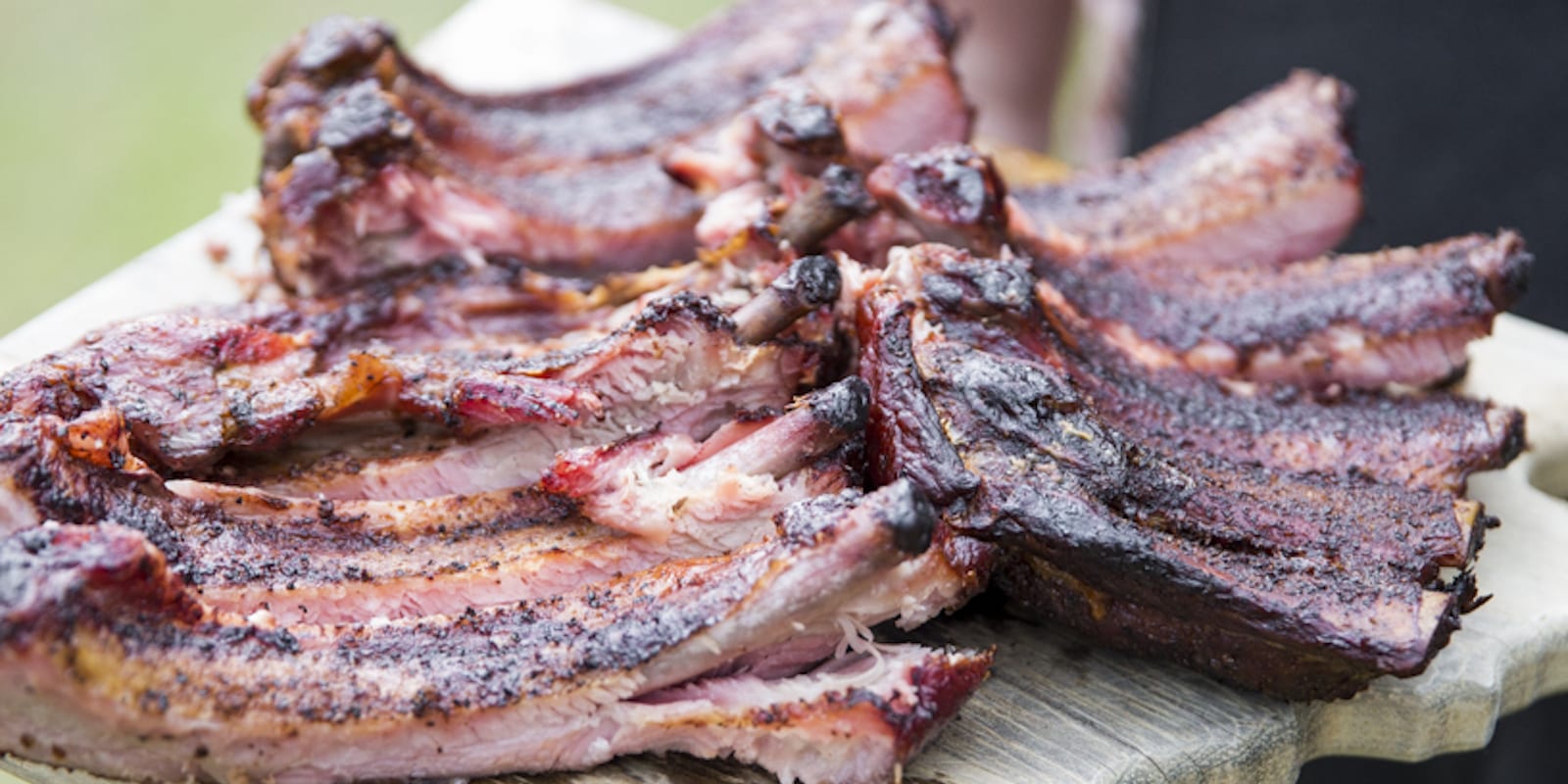recipe 
yields
Serves 4
1 shot kosher salt
1 shot coarsely ground black pepper
½ shot brown sugar
½ shot garlic powder
½ shot paprika
¼ shot garam masala
2 racks baby back or St. Louis-style spare ribs
about 3 pounds each
Ingredients
steps
Scott Moody, one of the partners at PK Grills, uses a shot glass to measure spices for this aromatic seasoning blend. For the deepest flavor, allow ribs to marinate in the refrigerator for up to 2 days.
- Combine seasonings in a bowl and set aside.
- Rinse ribs in cool water and remove the membrane from the underside of the ribs. Liberally coat with rub on both sides, wrap in plastic, and put in refrigerator for at least 2 hours or up to 2 days.
- Using a full chimney of lit charcoal, set up the grill for two-zone cooking and bring the temperature up to 250 to 275 degrees. Open the intake vent beneath the coals, as well as the exhaust vent above where meat will be roasting. The other two vents should be closed. (Not using a PK? Vent your grill for indirect/two-zone cooking.) The temperature inside the grill will lower when you introduce the cold ribs. Strive to maintain an internal temperature of 225 degrees. If you’d like to add aromatic wood, add a few good-sized chunks to the coals at the beginning.
- Add ribs to side of grill opposite the coals, close lid, and make final vent adjustments to reach a temperature of 225 degrees. Cook time will vary depending on the type of ribs you choose. Larger slabs with more meat, like St. Louis-style ribs, will need a bit longer. Baby back ribs require slightly less time. Plan on 3 to 4 hours at a solid 225 degrees. Don’t peek at your ribs too often. As the old pitmasters say, “If you are looking, you aren’t cooking.” That said, after about 45 minutes of cooking you may need to add coal every 30 minutes or so to ensure you maintain 225 degrees, and you’ll have to open the grill to do that. Just be quick about it. While the grill is open, you may also want to spritz your ribs with a little water or (better yet) apple juice to keep the outside moist. The sugar in the apple juice combined with the brown sugar in the rub will caramelize and help form a tasty bark on your ribs.
- Use a digital thermometer to determine doneness. Place the probe into a thick part of the meat, away from bone. Look for an internal temperature between 195 and 200 degrees and sample several different areas to ensure you’ve achieved the target temperature. Once the ribs are in that window, you can feel confident that they will be done, moist, and delicious.
share
- Recipes by Paula Disbrowe






